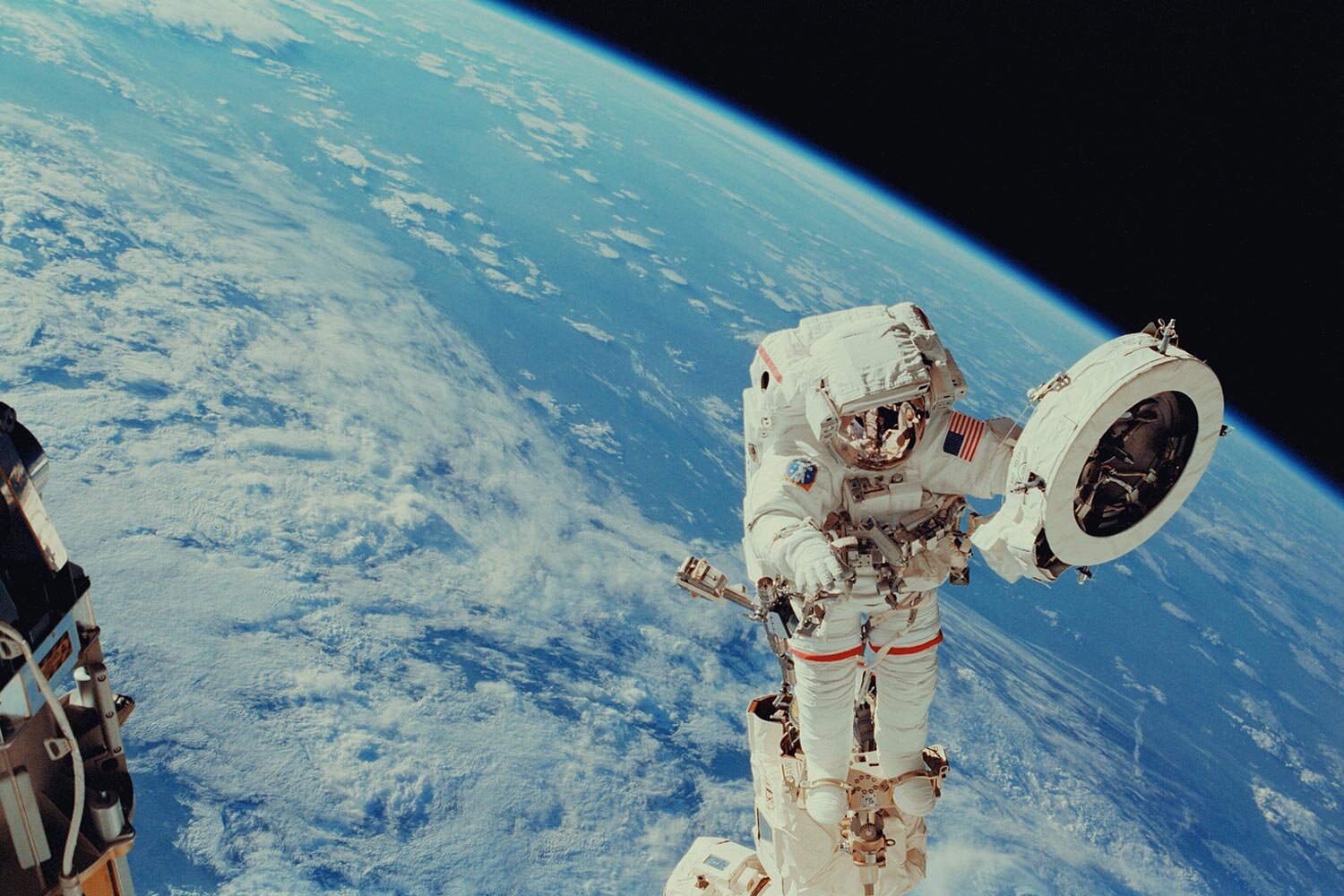
Mochii for Space Vehicle & Crew Safety
Onboard the International Space Station
In the field: Mission Safety Onboard the International Space Station
A primary engineering need for Mochii S on ISS is the rapid and accurate identification of wear and debris particles that can be causes or byproducts of malfunctions in space vehicle and payload systems. These can take several months to return to Earth for analyses to guide mission decisions. Mochii S can enhance crew and vehicle safety by rapid and accurate identification of microscopic mission threats, especially in time-critical situations where samples cannot be sent back.
For example, in 2013 ISS crewmember Luca Parmitano was conducting a maintenance extra-vehicular activity (EVA), and detected a water leak buildup in his extravehicular mobility unit (EMU) helmet. The EVA was terminated, and Dr. Parmitano was returned to the Quest Airlock safely. Engineers were not able to investigate the causes of the water leak in his suit until more than six months later, when they were finally able to return to suit to Earth. During this time, all EVAs were suspended until the root cause of the problem was found, resuming only in October 2014. The investigation discovered aluminum silicate contamination clogging a line in the EMU fan pump separator, a blockage that caused water flow to back up into Luca’s helmet. The root cause was contamination build-up in the filter -- a problem that could be solved onboard once identified.
In similar future cases, the Voxa Mochii S onboard ISS will accelerate the investigation and return to planned activity within days.
In another example, one of the most far-reaching failure analyses of the ISS was the failed starboard SARJ, a key element of the solar array tracking system that powers the ISS. The SARJ failed in late 2007, preventing the solar panel array to orient itself correctly and reducing power to the ISS, resulting in significantly reduced capability until it was fixed in November 2008.
Mission Control instructed the crew to collect magnetic debris from the failed mechanical surfaces using kapton tape in an EVA, but the material could not be analyzed until returned to Earth. A key question was whether the debris came from the trundle bearing rollers (440C steel) or the tracks (nitrided 15-5 PH steel). Once scientists on Earth determined that nitrogen was present in the debris, they identified the source of the debris as the tracks, and proper corrective action could be taken.
In similar future cases, the Voxa Mochii S onboard ISS will allow astronauts to analyze the debris metallurgy on-station, and accelerate problem resolution and save months of reduced-capability.




